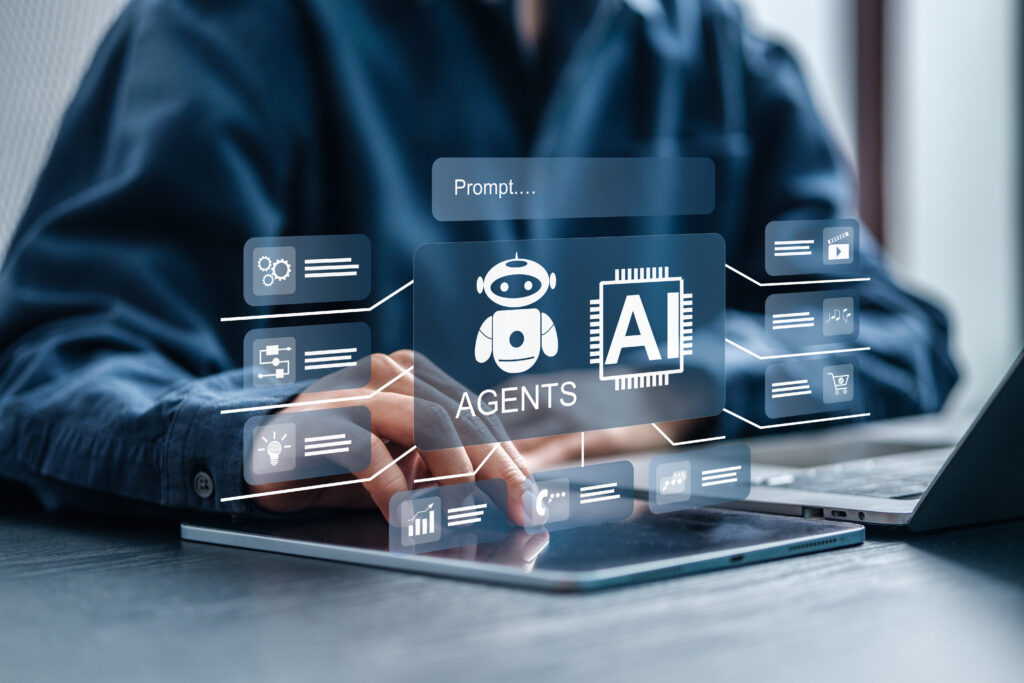The path food takes from harvesting to distribution to store shelves and then to tables is essential for everyone, but full of challenges for food and beverage companies. Keeping the food safe is important, and strict regulations help ensure that. The demands from customers regarding eating preferences, as well as the information on packaging, are changing, leading to more regulations on what information must be shared on a food label. While navigating these challenges in a vital and highly regulated industry, food and beverage companies face supply chain volatility and staffing shortages. In the digital era, navigating these challenges requires a data-driven approach with efficient processes buoyed by a powerful technology and application stack.
Unfortunately, many companies in the food and beverage sector continue to struggle with digitizing and integrating their processes and technology. Inefficiency reigns with manual processes and a reliance on manual operations that slow productivity. The lack of integration leads to siloed, disparate systems and departments trying to function with data inconsistencies and inefficient access to critical data. As a result, just 32% of food and beverage executives can create practical value from data, according to research by Aptean, an ERP provider that specializes in the food and beverage sector. The lack of digitization has also led to the prevalence of paper-based processes and the associated paper processing, which is more costly than electronic invoicing. The lack of technology is driving transportation and logistics leaders to higher costs and impacting delivery experiences.
Legacy systems and processes are also impacting the business. Food and beverage companies are also seeing 24% of revenue held up in accounts receivable, slowing cash flow and limiting agility. The staffing and skills shortages are causing 45% of food manufacturers to turn down business, according to research by Aptean, an ERP provider specializing in the food and beverage sector.
The Platforms for Enabling Improvement
How can food and beverage companies overcome their process and technology roadblocks to meet consumer demands better, comply with changing regulations, and succeed in the face of staffing shortages? Collecting, accessing, and analyzing the right data would certainly help. That starts with integrated ERP systems that consolidate data across departments for better decision-making.
In addition to the ERP foundation, Customer Relationship Management (CRM) tools help collect and manage customer data to provide insight into customer behavior and preferences and provide a source of information for analysis against broader industry trends. In terms of delivery and logistics, Supply Chain Management (SCM) is essential to enhance logistics and inventory management. Finally, as long as customers have integrated ERP, CRM, and SCM systems providing clean and actionable data, Business Intelligence and Analytics can transform that data into insight for drive data-driven decision-making.
The Impact of a Food and Beverage-Specific ERP
Companies have been seeing benefits to implementing all these systems, particularly ERP, for decades. While industry-agnostic ERPs do provide plenty of value, many companies in food and beverage find themselves customizing those to fit their own needs. In response, software providers such as Aptean have developed ERP systems tailored to the unique challenges of the food and beverage industry.
These industry-specific systems feature tailored modules for essential food and beverage processes such as production, compliance, and quality control. Additionally, they are also aligned with the industry’s workflows, enabling improved data integration and a more seamless flow of information across departments. Additionally, the sector knowledge built into an industry-specific system is able to target the most common manual processes for automation, reducing errors and increasing efficiency. Finally, in the case of Aptean, real-time analytics with insights made for food and beverage organizations enable proactive decision-making.
The Path to Transformation
While the benefits of digital transformation and implementing modern, tailored ERPs are evident, the journey to those returns on investment can be tough to start. Before beginning any ERP implementation, migration, or upgrade, companies should conduct a thorough needs analysis and set clear objectives.
A launching point for many companies that have transformed successfully is to assess current processes. This helps identify the most glaring inefficiencies and areas where process change could lead to overall improvement. This is important to do before taking the next step, which is investing in technology like ERP, CRM, SCM, and analytics. Automating a broken process won’t improve anything, so it’s important to make sure there is a plan for process transformation along with technology upgrades.
Technology projects should also include a focus on training for existing employees to develop the skills they will need to work with the processes and technologies. That also serves to encourage adoption. During implementations, engaging stakeholders is essential, both to get them acclimated on the new systems and to get feedback on how new technology can best support lines of business.
After the ERP implementation, the transformation continues. There will be a wealth of new data available, and companies should focus on using that data to enhance customer experiences by improving service to meet evolving expectations.
The Next Steps After Transformation
Transformation doesn’t end when a company upgrades its processes and technology stack. That’s necessary to meet the demands of the industry, but more can be done to capitalize on the investment and become a food and beverage leader. First, with the new data foundation in place, companies should be looking to leverage AI and advanced analytics. In the case of Aptean, the AppCentral platform features add-ons that bring intelligent automation and data-driven insights. These can help optimize processes and enable better decision-making through improved forecasting. Companies should also ensure that they have integrated their complementary systems—bringing together ERP with customer-focused and supply chain systems.
Beyond expanding technological capabilities, food and beverage companies should continue to engage with the lines of business and end users. This helps gather essential feedback and enables continuous improvement of processes and technology configurations. Additionally, training and change management should be ongoing to ensure employees are able to use new systems and follow new processes, which leads to better adoption and better returns on investment.
Moving away from siloed systems and paper-based processes is critical in the digital business era. There are so many challenges that food and beverage companies face and those that have undergone transformation of processes and technology have seen increased efficiency from better processes and increased automation, enhanced data visibility leading to better decision-making, and improved customer satisfaction. Working with technology providers that have industry-specific knowledge has the potential to amplify all those benefits as food and beverage organizations look to navigate through changing landscapes.
What This Means for ERP Insiders
Identify your most significant industry challenges and assess where your processes and technology are falling short. Before embarking on a digital transformation, identify the specific areas where improvement is most necessary and where it can make the biggest impact. This may be manual and inefficient processes or siloed and incapable systems.
Consider technologies that maximize investment and allow for scalability. When considering an ERP transformation, consider what customizations are necessary to meet the specific needs of your industry and whether an industry-specific ERP may be the best fit. Explore cloud technologies that support scalability and will integrate with other important systems, such as CRM, SCM, and analytics.
Build a culture of continuous innovation. Implementing new processes and technologies is just the first step to becoming a digital business. Never stop engaging with line-of-business stakeholders and end-users to identify areas for improvement. With the right tools and organization, innovation and improvement can be continuous. Training and change management shouldn’t stop when new systems go live.




